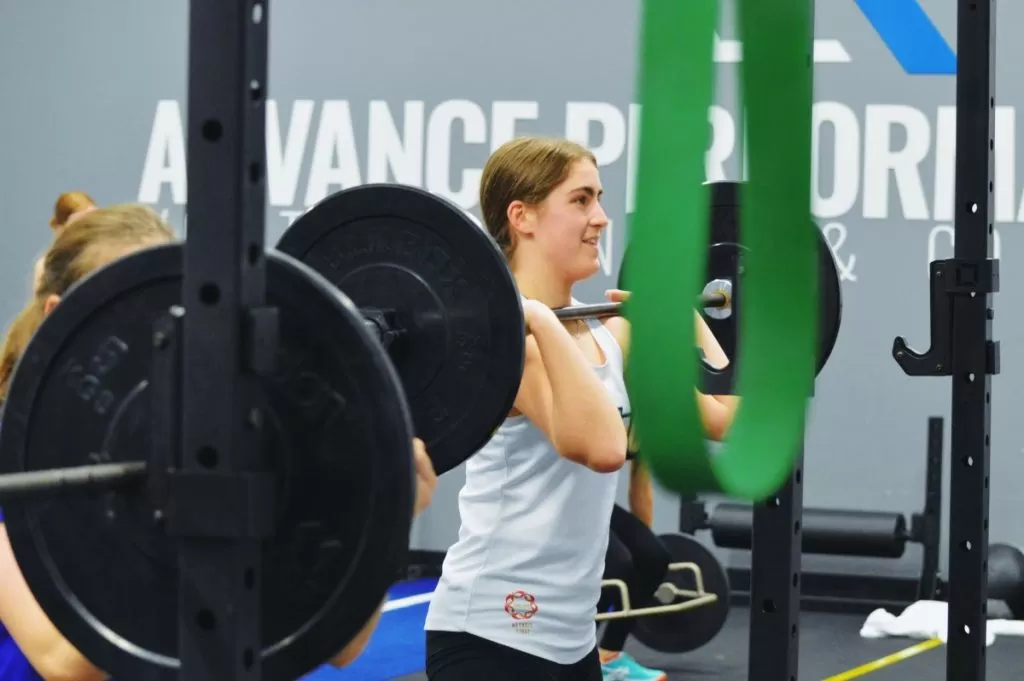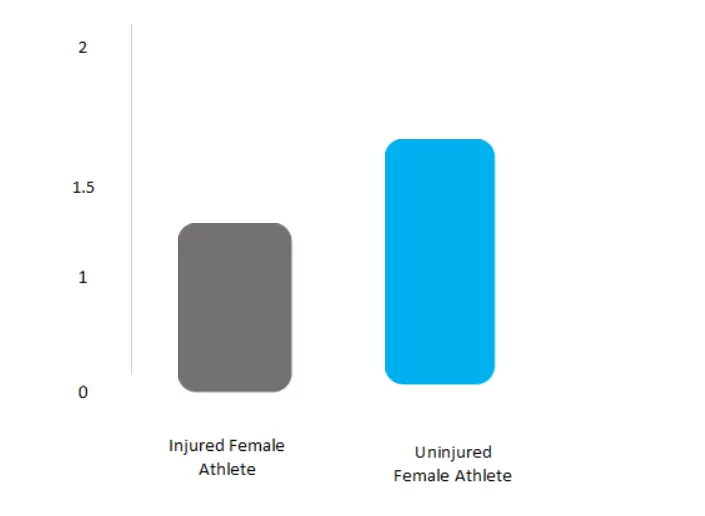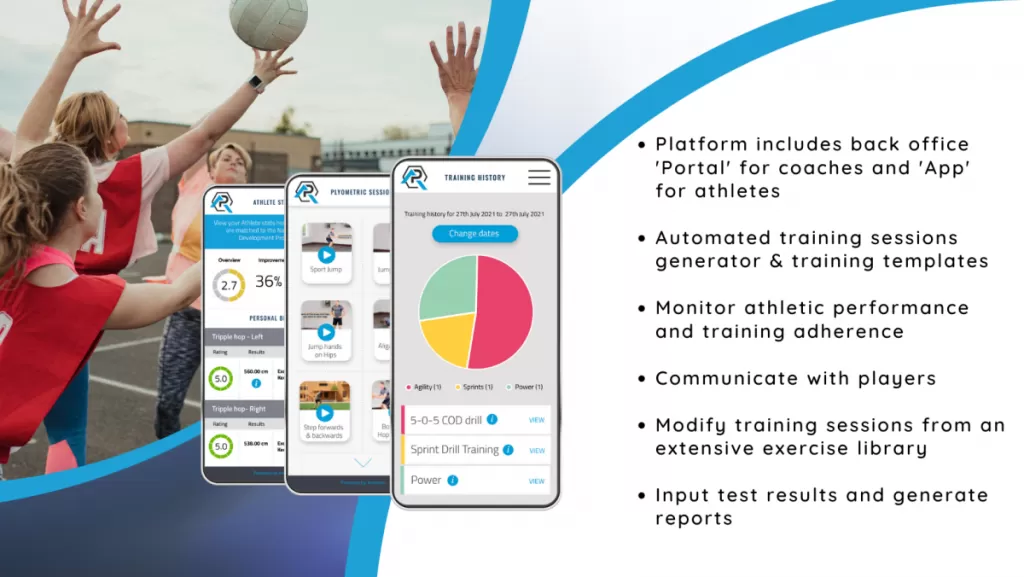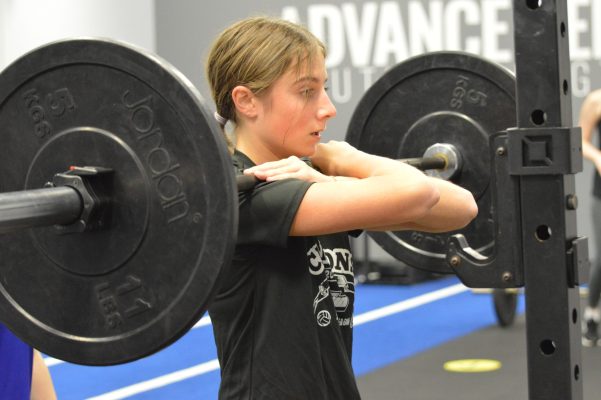It is well known that strength training stimulates a series of adaptations, that will aid both male and female athletes, for example, increase in rate force production (RFD) (Aagaard et al. 2002), RFD is linked and correlated with many athletic movements, jumping, cutting, and sprinting. Neural and neuromuscular changes (Marshall et al. 2011), and movement control (Carroll et al. 2001). Additionally, the principles of training (progressive overload – the prescription of a stimuli, which is greater than what the body is used to), along with the acute variables, intensity volume of training and intra-rest and rest periods seem to elicit similar adaptations in male and female athletes.
Even though the training principles and acute variables appear to be consistent, there are anatomical and endocrinal/hormonal considerations, which we need to apply, especially when planning and delivering strength training for female athletes. And, with the recent explosion of more young girls and females playing a range of sports (netball, rugby, basketball, tennis, to name a few), as sport and strength coaches, we need to ask, are we preparing our next generation of female athletes? And, as strength training, is highly recommend in playing a key role in preparing our athletes, are there any strength training considerations, which we can be easily applied?
Strength Training and Exercise Selection
Strength training is frequently prescribed as a training modality to develop performance and help reduce musculoskeletal injuries. Unfortunately, knee injuries, especially non-contact Anterior Cruciate Ligament (ACL), occurs with a four-to-six-fold greater incidence than in male athletes (Hewett et al. 2010). Many factors are linked with the increase in ACL injuries, for more info, view our ACL blog. Addition to the risk factors, the ‘type’ of strength exercise might be an important consideration when delivering strength training sessions. For example, in a study where the researchers were investigating strength training and knee mechanics (stop-jump task) (Herman at al. 2008), the researchers gave a group of athletes’ strength training over nine weeks, to measure possible changes in knee joint mechanics: when jumping and landing.
The type of strength training was resistance bands, and athletes adhered to the progressive-overload principle, by the athletes receiving a higher-resistant band as they developed their strength. Testing the athletes, post-training, the athletes did show a development in strength, however interestingly, no changes in knee (and hip) mechanics were reported in the jumping or landing activities. The authors of the study did state that the type of exercise might be an important element, and exercises like squats and lunges (multi-joint) might be required.
Multi-joint exercises may be superior to single joint exercises, due to the changes in neuromuscular adaptations (Chilibeck et al. 1998). This does not mean that single exercises should not be used, as single-joint exercises may aid in a muscle mass if that is the goal, however, multi-joint exercises seem to drive neural and neuromuscular changes, along with allowing for higher loads and force production. As female athletes are more likely to suffer from an ACL knee injury, it would make sense for multi-joint exercises like, back squats, front squats, deadlifts, and lunges to be in their strength training programme.

Strength and Menstrual Cycle
A healthy female athlete is imperative to long-term athlete development. The menstrual cycle is an important factor in keeping the athlete healthy for numerous reasons, and factors like poor nutrition, both lack of nutrition or quality food choices (Manore, 2002) and very low body fat (Roupas & Georgopoulos, 2011) can hinder natural cycles. The average age for menarche is 12.7 years (+- 1.3 years). The menstrual cycle has four distinctive phases: 1) menstruation, 2) follicular 3) ovulation, and 4) luteal phase.
Studies (Atan, 2006., Arazi et al. 2019) have shown that females athletes can perform (strength, speed, power) throughout the different phases, however, we need to appreciate that each athlete will have a different experience, and feedback mechanisms (motivation changes, energy levels, joint and muscle pains). We also need to appreciate that there is a change in two main hormones, with peak oestrogen in the late follicular phase, and peak progestogen in the luteal phase.
From a specifically a strength training perspective, studies are inconsistent with reports of the cycle (follicular phase) significantly effecting strength training/improvements (Rodrigues et al. 2003), and other reports showing that the cycle did not alter or effect strength training/improvements (Elliott et al. 2003).
In the last few years, more attention has been investigating the possible association with between hormonal changes in the menstrual cycle and joint laxity and/or reduce joint stiffness, especially around ovulation (approximately day 14 of the cycle) (Herzberg et al. 2017). This may have an important consideration when deploying exercises and training sessions, especially with high loads, and or new complex exercises.
I would strongly suggest reading the excellent journal by Ptichers and Elliot-Sale (Pitchers et al. 2019), where the authors give practical applications to the different phases through the cycle, and possible effects in training.
Strength Training – How strong is strong enough?
From a strength or force production aspect, male athletes produce more absolute force than female athletes, due to a greater amount of muscle mass. However, when comparing force production in relative terms (relative to the athlete’s bodyweight), there seems to be less differences between the two genders.
The back-squat exercise is frequently used to test relative strength, due to the recruitment of major muscle groups, the exercise association to other sporting activities, jumping, landing, and sprinting, and motor skills, balance, and coordination (Comfort & McMahon, 2015). Other studies have also taken this approach to investigate if there’s a minimal relative strength level for playing sports and to reduce injuries (lower limb injuries). One study in particular (Case et al. 2020), which recruited a range of athletes, including female volleyball and softball athletes incorporated the back squat as a standard measure of relative strength. The authors reported a strong correlation between the athlete’s relative strength and lower limb injuries. The authors reported that athletes who were below a relative strength ratio of 1.6 x bodyweight, were more likely or susceptible to a lower limb injury throughout the season. (Figure 1. Taken from Case et al. 2020).

Practical Application
Working and coaching female athletes both at the Lab and remotely, we strongly recommend this to the athletes, sport coaches and parents:
- Female athletes need to participate in strength exercises (minimum of twice a week)
- Try and use loaded multi-joint exercises – squats, lunges, deadlifts, rows and presses
- Give variation to the exercises and change the load and velocity of the exercises
- Empower the female athlete to listen and be aware of their own bodies. Fatigue level, energy levels, any muscle pain and joint soreness through their menstrual cycle
- Test and monitor relative strength ratios, both for injury reduction and sporting preparedness/performance

With all our female athletes, we take an athlete-centred approach in their development. We deliver this at the Lab and remotely, via our athlete management coaching system and our app – The Athlete App.
On starting a long-term development programme with us, and strength and conditioning sessions, athletes create an athlete profile, which explores different physical attributes, especially strength both statically through the isometric mid-thigh pull and dynamically via the back squat exercise. This means that we can monitor our athlete’s development and give feedback on their training sessions.
As we train 100’s of female athletes, we use the 1.6 bodyweight as a minimum target of strength development, as well, as exploring other physical attributes and their sporting demands.
Using the Athlete App, athletes, can follow their S&C sessions, and upload their training loads, reps completed and exertion level. This helps the athlete to take control of their own training and development.
As strength coaches, we can review this training data, and feedback/support our athletes.
References
Aagaard, P., Simonsen, E.B., Andersen, J.L., Magnusson, P., & Dyhre-Poulsen, P. (2002). Increase rate of force development and neural drive of human skeletal muscle following resistance training. Journal of Applied Physiology, 93, 1318 – 1326.
Arazi, H., Nasiri, S., & Eghbali, E. (2019). Is there a difference toward strength, muscular endurance, anaerobic power, and hormonal changes between the three phases of the menstrual cycle of active girls? Apunts Med Sport, 54(202), 65 – 72.
Atan, T. (2006). Effects of menstrual cycle on sports performance. Intern. J. Neuroscience, 116, 1549 – 1563.
Carroll, T.J., Riek, S., & Carson, R.G. (2001). Neural adaptations to resistance training: implications for movement control. Sports Med, 31(12), 829 – 840.
Case, M.J., Knudson, D.V., Downey, D.L. (2020). Barbell squat relative strength as an identifier for lower extremity injury in collegiate athletes. Journal of Strength and Conditioning Research, 34(5), 1249 – 1253.
Chilibeck, P.D., Calder, A. W., Sale, D.G., & Webber, C.E. (1998). A comparison of strength and muscle mass increases during resistance training in young women. Eur J Appl Physiol, 77, 170 -175.
Comfort, P., & McMahon, J.J. (2015). Reliability of maximal back squat and power clean performances in inexperienced athletes. Journal of Strength and Conditioning Research, 29(11), 3089 – 3096.
Elliott, K, J, Cable, N, T, Reilly, T, & Diver, M, J. (2003). Effect of menstrual cycle phase on the concentration of bioavailable 17-beta oestradiol and testosterone and muscle strength. Clinical Science, 105(6), 663-669.
Herman, D.C., Weinhold, P.S., Guskiewicz, K.M., Garrett, W.E., Yu, B., & Padua, D.A. (2008). The effects of strength training on the lower extremity biomechanics of female recreational athletes during a stop-jump task. American Journal of Sports Medicine, 36, 733 – 740.
Herzberg, S.D., Motu’apuaka, M.L., Lambert, B.S.W., Fu, R., Brady, J., & Guise, J.M. (2017). The effect of menstrual cycle and contraceptives on ACL injuries and laxity: A systemic review and meta-analysis. The Orthopaedic Journal of Sports Medicine, 5(7), 1 – 10.
Hewett, T.E., Ford, K.R., Hoogenboom, B.J., Myer, G.D. (2010). Understanding and preventing ACL injuries: Current biomechanical and epidemiological considerations – update 2020. North American Journal of Sports Therapy, 5(4), 234 – 251.
Manore, M.M. (2002). Dietary recommendations and athletic menstrual dysfunction. Sports Medicine, 32(14), 887 – 901.
Marshall, P.W., McEwen, M., & Robbins, D.W. (2011). Strength and neuromuscular adaptation following, one, four, and eight sets of high intensity resistance training in trained males. Eur J Appl Physiol, 111, 3007 – 3016.
Pitchers, G., & Elliott-Sale, K. (2019). Considerations for coaches training female athletes. Professional Strength & Conditioning, 55, 19 – 30.
Rodrigues, P., Correia, M., & Wharton, L. (2019). Effect of menstrual cycle on muscle strength. Journal of Exercise Physiology, 22(5), 89 – 97.
Roupas, N.D., & Georgopoulos, N.A. (2011). Menstrual functional in sports. Hormones, 10, 104 – 116.





